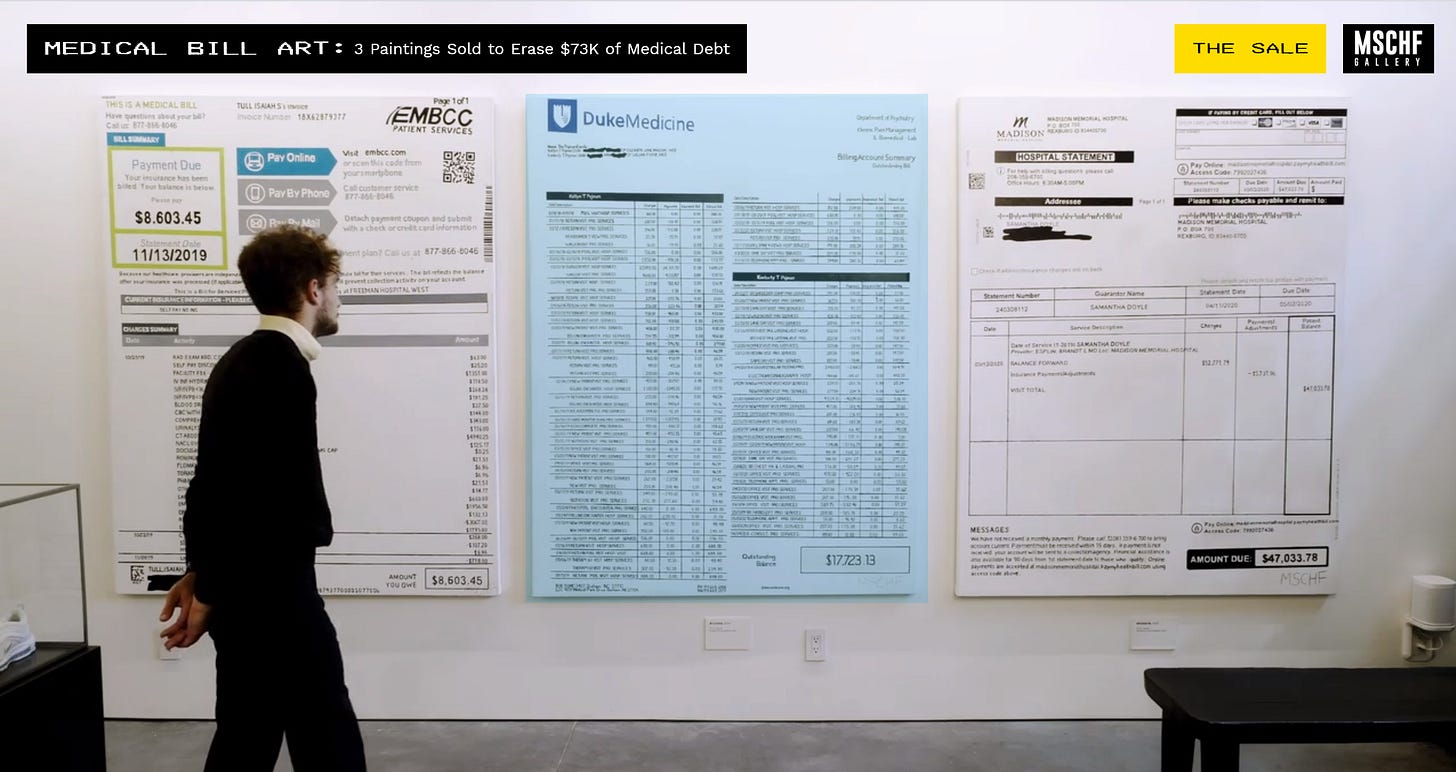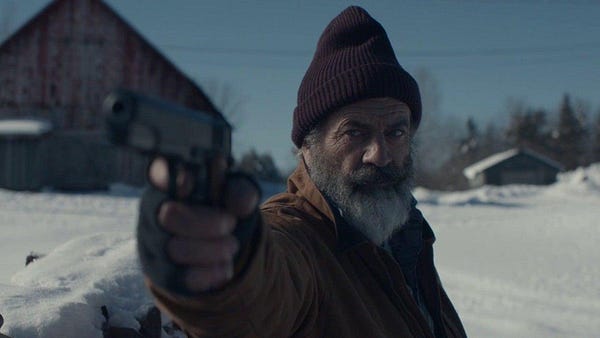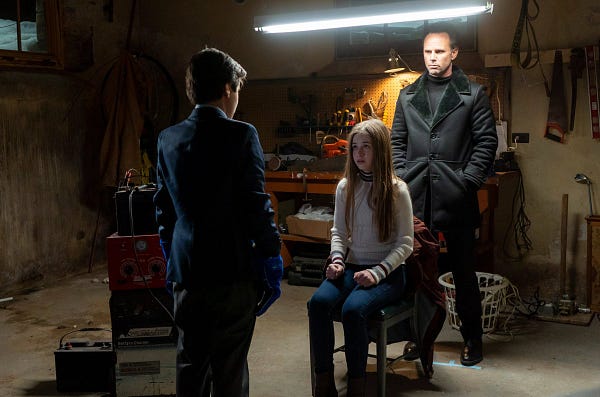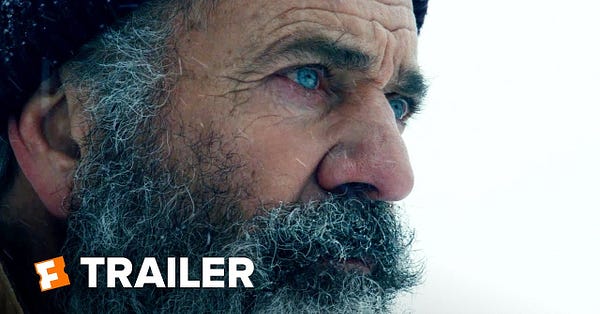BONUS: Hospital Bills and High Art
NGL writes about MSCHF's latest mischief, Travis Scott's never-ending party, and one fat man
This newsletter is an extension of my latest edition of The G-L Review and includes additional analysis and commentary on the intersection of business, media, and pop culture, particularly as it pertains to Gen Z. For the next four weeks, you’ll receive it delivered directly to your inbox, though moving forward, all bonus content will only be available on our Patreon.

MSCHF Is Selling Medical Bills To Pay Off…Hospital Bills

(Photo by MSCHF)
“Hospitals. Debt Collection Agencies. Lawyers. All of them are trying to sell your debt. Why can’t you do the same?”
Branded “We turn your pain into paintings,” the shadowy group known as MSCHF is back with one of their most ambitious drops ever: selling normal people’s medical bills as high-end art in order to pay off the debt in of itself.
It’s hard to really pin down what exactly it is that MSCHF does, or who they are. The collective is famous for things like filling up the air bubble in several pairs of Air Max 97s with water and dubbing them the “Jesus Shoes”, turning rubber chickens into bongs, and creating the ultimate field guide/encyclopedia for spotting “Plutes” (i.e. plutocrats [i.e. billionaires]). Not many news outlets have gotten close to unearthing much information about the company, other than to note they’re located in the trendy Williamsburg neighborhood in Brooklyn and get several quotes from CEO Gabriel Whaley, who describes his creation as running on “structured chaos.”
"A brand of what? I don't know. Being a company kills the magic," Whaley told Business Insider. "We're trying to do stuff that the world can't even define.”
The West Point dropout went on. “"Our perspective is everything is funny in a nihilistic sort of way," Whaley said. "We're not here to make the world a better place. We're making light of how much everything sucks."
One thing that is pretty clear about the group of creators, though, is that they espouse progressive values and ideology. For example, “Spotting Plues” ran with the tagline, "To eat the rich, you must first know where to find them.” A shell restaurant they launched called “The Blue Donkey” allowed employees to pay for their meals using company money, when in reality, the "food" orders were political donations to candidates with anti-corporate policies.

Which brings us to Medical Bill Art, launched on September 28th. MSCHF went into painstakingly accurate detail to replicate three distinct medical bills from real people by enlisting the work of talented artists who enlarged the receipts into gallery-sized canvases. You can watch the behind-the-scenes production video at medicalbill.art, as well as an ad featuring fake lawyers lamenting the “obscene” cost of modern art and delivering the aforementioned quote regarding debt.
Most importantly, though, is the art itself. MSCHF is partnering with Otis, “a fractional ownership platform that allows people to easily invest in contemporary art and rare collectibles.” What does this mean?
Basically, with Otis, you can invest in works of art from street artists like Banksy and KAWS, as well as rare sneakers such as player-exclusive Jordans. Otis buys the products outright and assigns share values based on its price point; when you buy shares of said artwork from other users, your shares gain and lose value based on the changing “stock price.” They also prepare in-depth research papers analyzing the market and explaining the risks and rewards of each asset, while allowing you to view your assets in their pop-up gallery in New York. (Fun fact: I’ve written part of a newsletter in the past explaining the business behind Otis, but never fully got around to finishing it. For another day…)
For Medical Bill, MSCHF sold to Otis with the goal of attaining a valuation of $73,360.36; shares are currently trading at $20 a piece. As described on the listing, “By making a bill into painting, MSCHF set two monetary forces equal and opposite on another, thereby nullifying the bill while also creating commentary on the US healthcare system. Participating in this drop represents the opportunity to co-own art by MSCHF, while also erasing the medical debt of 3 individuals.”
In my humble opinion, MSCHF has nailed branding by not being a brand that stands for anything specific. They just create crazy stuff, and their fans snap it up—a friend of mine purchased a copy of “Spotting Plutes,” after all. But that all-over-the-place, everything-but-the-kitchen-sink style is what keeps bringing people back.
“If we can make people a fan of the brand and not the product, we can do whatever the f--k we want," Daniel Greenberg, their head of commerce said. "We build what we want. We don't care.”
Will Medical Bill work out, though? If their track record of selling out expensive products in minutes indicates anything, it’s that they’ll pass this bold test with flying colors.

The Shrouded Hype of Travis Scott

(Photo by GQ)
I’ve never really been the biggest fan of Travis Scott. In fact, far from it.
For a long time, he represented the kind of rap I loathed. Extremely over-produced to the point where it felt almost mechanical, his so-so lyrics couldn’t make up for the boundless amount of features his projects celebrated. Plus, even after watching Look Mom I Can Fly — the 2019 Netflix documentary tracing the mosh-pit-filled absurdity of his Wish You Were Here tour — I still didn’t really get it, whatever it was.
There is, however, a language I will always understand: sneakers. And when Scott’s backwards-Swoosh-clad Air Jordan 1 came out and sent resale prices soaring through the roof, ensuring that every hypebeast from Ontario to Siberia needed to cop themselves a pair, I realized, Oh. I get it now.
It wasn’t just that my high school cousin was hyping up Astroworld to me; or that Scott’s relationship with Kylie Jenner blew up tabloids; or that he enlisted the venerable street artist KAWS to design a cover for his recent single, The Scotts; or that every third person I saw at ComplexCon last summer was rocking Cactus Jack — his creative label. It was the sum of all of these parts, and then some.
After all, when you appear as a literal, omnipresent being in the world of Fortnite as 27.7 million people tune in to see your deity form rage on a virtual stage, you’ve probably tapped into that elusive thing known as Tha Culture in some fashion.
A recent GQ profile piece on Scott makes sure to note that this number of concertgoers at La Flame’s Fortnite venture was more than the population of Australia before diving into his relatively-unknown origin story. Sure, hip-hop heads probably know that he first really broke out when working as a producer for the 2011 G.O.O.D. Music compilation Cruel Summer — when Scott was only a teenager — but what’s lost in the conversation is the period of his life before that.
From GQ:
Scott dropped out of the University of Texas at San Antonio after his second year because he wanted to focus on music instead and took the cash his parents gave him for school to book a plane ticket to New York City—a decision that upset his mom enough that she didn't speak to him for months.
After Scott quit school and his parents cut him off financially, he floated among his friends' couches in Houston or slept in his car as he hustled to get his music heard. He reached out to the producers and engineers he studied from the liner notes of his favorite albums. “He used to DM me on Twitter a lot and send me music and stuff,” Kanye-affiliated producer Mike Dean tells me.
Talk about The Art of the Cold Email (a newsletter topic for another day).
Whether it be collaborating with Christopher Nolan and Ludwig Göransson on the soundtrack for Nolan’s Tenet, modeling for the recent crystal-clad Dior x Air Jordan 1 collection, or releasing an album with one of his greatest influences in Kid Cudi, Travis never stops. The guy simply breathes innovative ideas and knows how to drop them right into the cultural zeitgeist for hypebeasts and simps to celebrate alike; I would even go so far as to argue that no one has tapped Gen Z better than Mr. Scott.
Which is why the quiet mystery shrouding his rise is so fascinating and, when juxtaposed to the bloody noses and broken bones suffered at his wild concerts (he once was arrested for inciting a riot), makes his star gleam even brighter, the ultimate paradox.

(Photo by Air Jordan)
There’s this thing in marketing called the mere exposure effect, and as Scott continues to appear everywhere — like, say, at your local McDonald’s, albeit with a mediocre meal — the harder and harder it is to stay away. Even for me, “90210” has quickly ascended to become one of my most-played songs of the year.
When talking in our Discord, one user predicted that Travis has the best chance to take the rap game “throne” by the end of the decade, particularly given his demonstrated widespread influence on youth culture.
If I were a betting man, I would cast my lot accordingly.

What I’m Listening To: A Dissection of Because the Internet
I’ve had a ton of people recommend Dissect to me off and on in the past. As host Cole Cuchna describes his passion project — which Spotify recently picked up so he can run it full-time — the podcast is “longform musical analysis broken into short and digestible episodes.”
As Cuchna talked about in a Reddit AMA, he’s a classically trained composer who likes all sorts of music, even if Dissect has mainly focused on hip hop / R&B. His fascination is simple:
“I think about Frank Ocean like I would think about Beethoven.”
I believe podcasting is the perfect medium for Chuchna’s overarching message, too. What better way to showcase the genius of someone like Frank Ocean than an in-depth breakdowns of the lyrics, production, and storytelling that goes into each and every track?
Anyway, this season’s focus is on what’s probably Donald Glover’s most heralded album, Because the Internet. If you know me, you know he’s one of my favorite artists ever; between Atlanta, Community, and Camp, Glover has amassed a portfolio of creative projects that influence me each and every day. And yet, I still feel like I’m learning so much fascinating stuff about BTI — such as the attached screenplay and short film, as well as Glover’s attempted suicide in the early ‘10s — through Cuchna’s calm narration, beat recreation, and more.
I usually only listen to conversation-based podcasts, but this one is way too well-done to not keep me invest each and every week they drop a new episode. If you like nerding out about artists you care about like I do, then Dissect is the podcast for you.

Trailer of the Week: Run, Fatman, Run!
It was announced earlier this year that Mel Gibson would be starring in a movie called Fatman alongside the always-stupendous Walton Goggins. We didn’t have much information about the project past that, however…
…until the trailer dropped last week. And wow, was it a doozy.



It’s important and necessary, though, that before giving too much attention to Fatman, we should point out that Mel Gibson is a horrible human being who has said many horrible things, including spewing both anti-Semitic and racist rhetoric on more than one occasion. Let’s not forget that his 2014 movie The Passion of the Christ heavily pushed forward the idea of “Jewish deicide” — more commonly referred to as the “Christ-killer” — myth that has perpetuated for centuries.
Therefore, I am by no means condoning Gibson in discussing this film. In fact, there’s a 99% chance I never actually see it. But with that being said, you just have to watch this trailer:
There’s so much to unpack here. First, the buried lede: they tease Gibson as playing a washed-up boxer or something, not a down-on-his-luck Santa Claus. Second, the ridiculous plot: a spoiled kid gets coal for Christmas before hiring a hitman in cliché fashion (Goggins’ character doesn’t seem to be a fan of the kid in question, either, given his contact reads “Little Turd). Third, the over-the-top action: given the amount of guns shown and the cat-and-mouse game present, this feels like Home Alone meets Skyfall meets John Wick.
I could go on — the bloody text splayed out over snow! — but you really just need to watch this thing again. And again. And maybe a few times after that.



Thanks for reading this bonus content from The G-L Review! If you would like to support us in our mission, click here — don’t forget to throw us a follow on Twitter, too.


